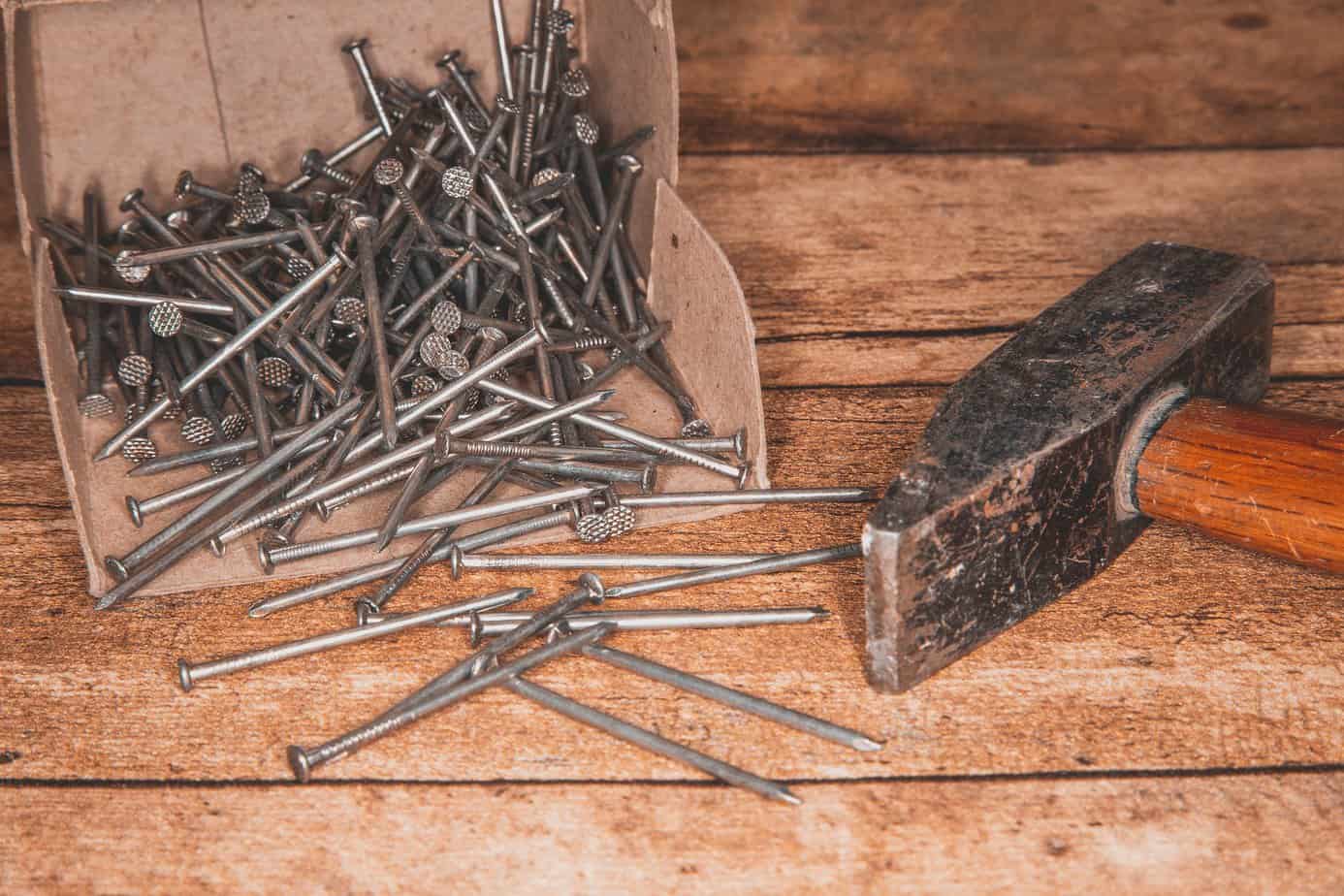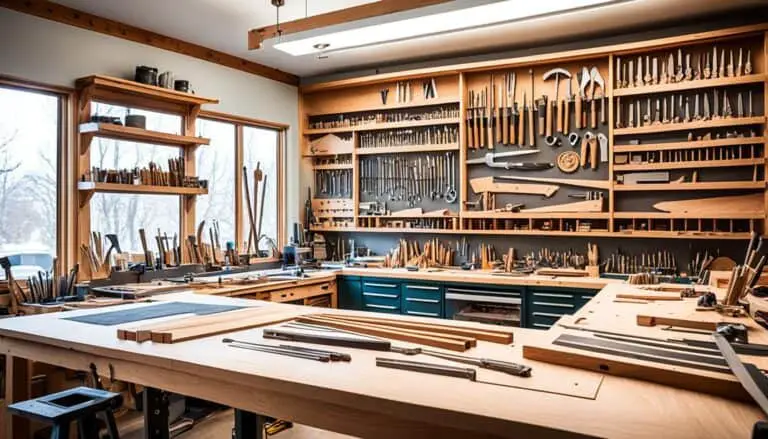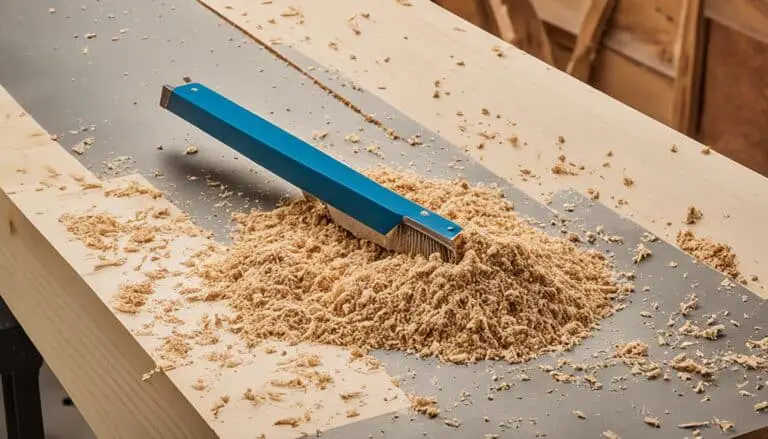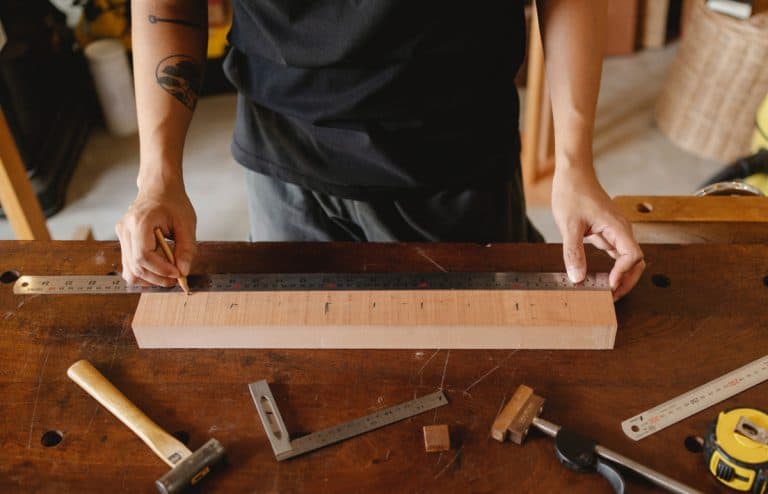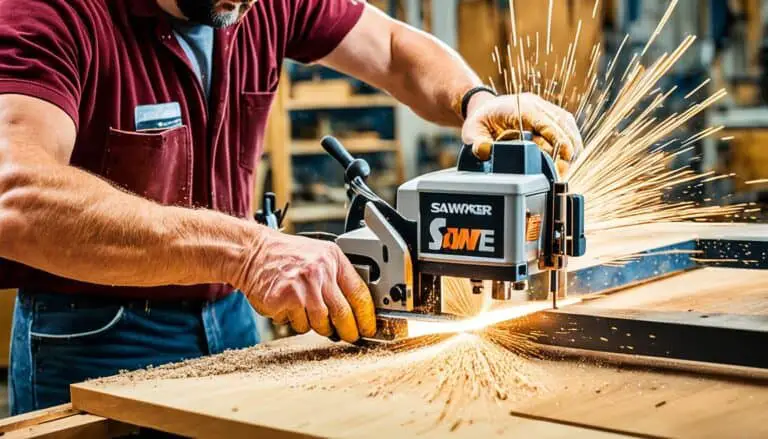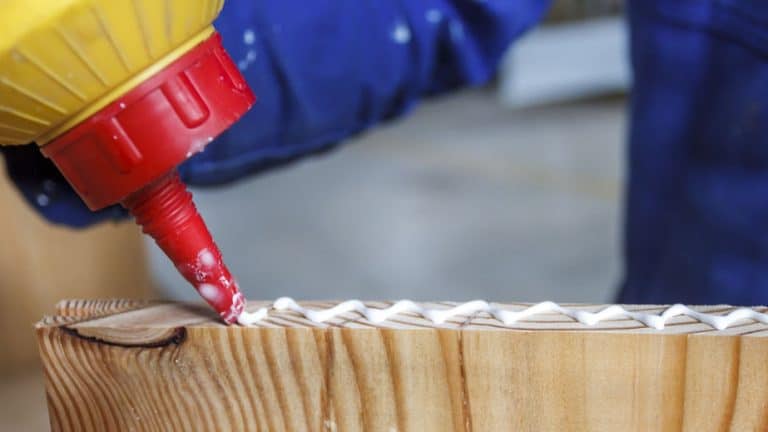The age-old question of how do nails hold wood together has been around for a very long time. When you look at a typical nail with a smooth surface on the sides it makes you wonder how when driven into a piece of wood it holds anything together let alone a piece of wood. Actually, there are very good reasons why a nail holds wood together and it may surprise you as to why.
Metal nails hold wood together mainly using friction, grip, and shear strength. When the metal nail is driven into a wood material it forces its way into the fiber of the wood. The fiber of the wood would press against the metal nail creating friction, the grip and strength of the metal nail keep the pressure between two different pieces of wood material.
There are many different types of metal nails, different lengths, grips, heads, and for different purposes. To truly understand how do nails hold wood together we need to understand a little more about nails in general.
Types Of Nails For Wood
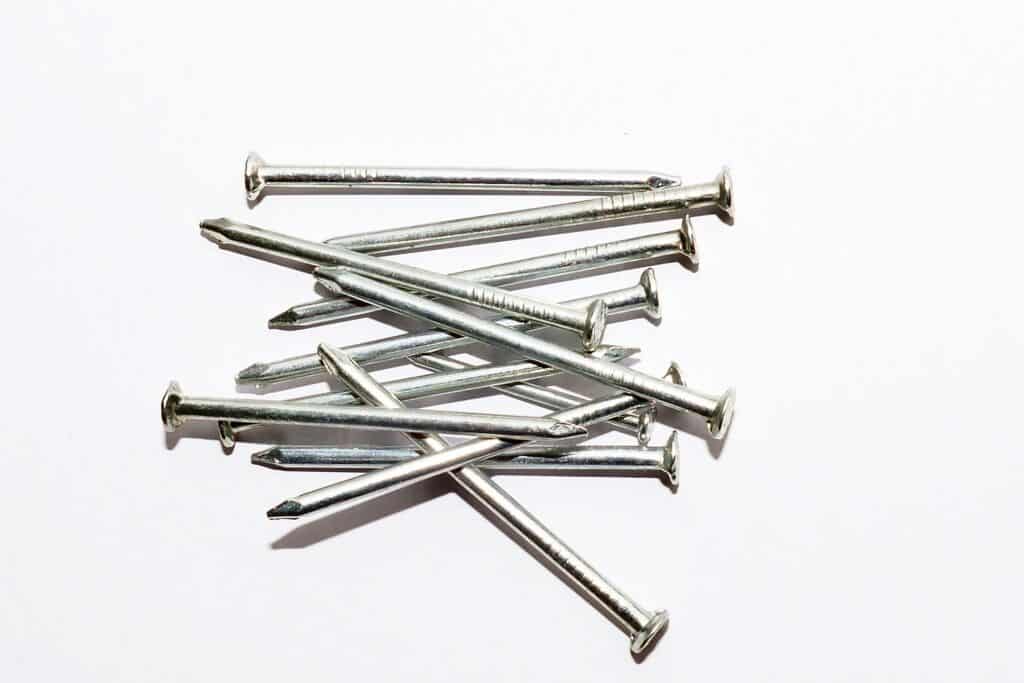
There are many types of nails used for wood projects. Common ones include:
- Round Head Nail – The typical round head nail has a large round surface on the top, generally making it easier to hit with your hammer. They come in various sizes and thicknesses to provide the greatest hold.
- Oval Head Nail – These have a smooth surface on the sides creating the oval look versus a Round Head Nail. They are used to help prevent the nail from splitting the wood.
- Finish Nails – Used to hold the surface boards together in construction such as plywood or particleboard, and can also be used on finished surfaces like siding or paneling. They have a wide head that is typically countersunk so they do not project too far out from the wood’s surface when hammered into place.
- Annular Ring Shank – This wood nail has annular rings along the length of the shaft of the wood nail. These rings provide excellent grip and assist you in ensuring your wood pieces will hold with a tight grip.
- Spiral Shank – These are primarily used in the wood construction industry. They have a spiral groove along the shaft on the length of the nail and do provide the extra grip you are wanting.
- Lost Head – The Lost Head Nail has a very small head on top of the nail and is used for hiding the nail when hit into the wood. You typically would use a punch to push the nail further down into the wood. These are used for finishing wood projects where you don’t want the nail exposed and/or covered with wood putty for the final finish.
What’s Stronger Nails Or Screws
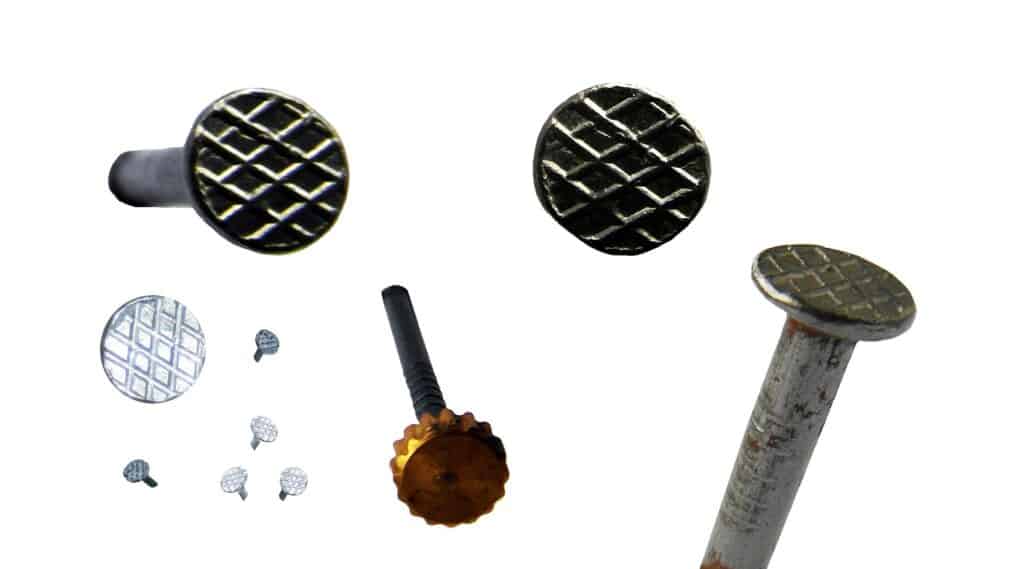
When it comes to deciding between nails and screws, you should know: Screws are stronger than nails when the two pieces of wood are being pulled apart. Nails provide more surface area contact with a piece of wood whereas screws only have threading in one direction.
You also need much less hardware for screw installation versus nail installation which is why they’re typically cheaper. However, if you want your project completed quickly then go with nails because installing them by hand takes about half as long as using a power drill for screw installation does.
This means that with so many things to consider like material type or desired function, there is no clear-cut answer on what’s better – wood nails or wood screws
Shear Strength Of A Wood Nail

To truly measure the shear strength of a wood nail is a complicated formula that involves a lot of numbers. I wanted to be able to describe it in better terms. Basically, it is the point where the nail will break. This number varies between nails, size, manufactured material, and application.
However, if you want a good description I wanted to provide that as well.
The shear strength of a wood nail is roughly 0.85 times the weight in pounds applied to it divided by the total surface area that it’s bearing load on. This means that if you were using a ¼” diameter, 16d common nail and had 400 lbs of pressure on it then its maximum breaking point would be around 290 lb-in or 43.047 N/mm².
A good rule of thumb for deciding whether your nails are strong enough is to make sure they’re at least twice as strong per inch than what you need them to support because anything less can cause splitting or failure during installation which will result in potential damage down the road due to uneven loads placed onto joints or connections between boards.
Recommended Wood Nails
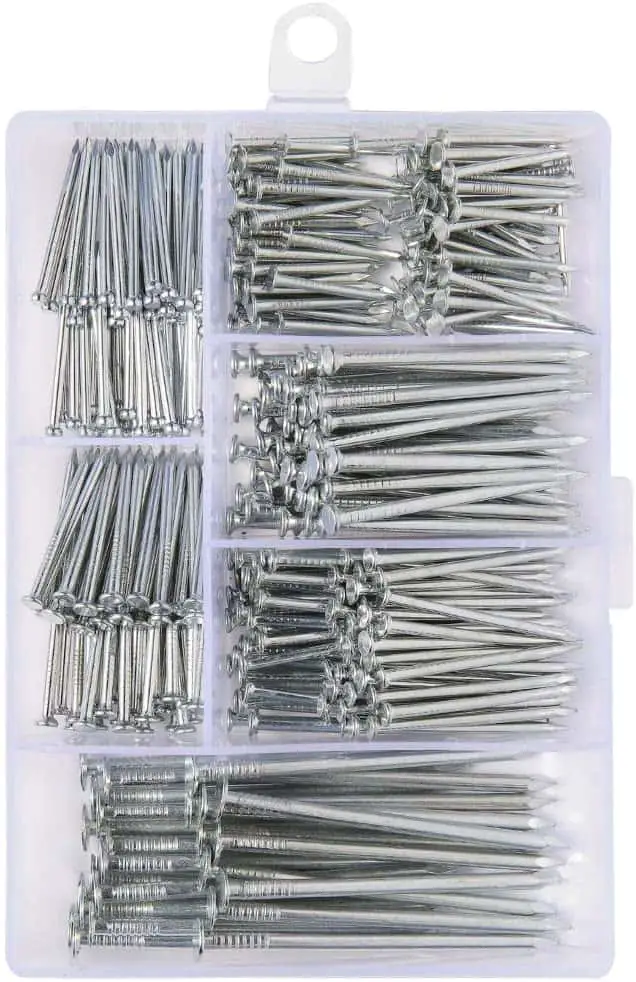
Premium Hardware Nails Assortment Kit, Maximum Length 2 Inches Galvanized Nails, 6 Sizes
This set of steel nails can be used for all kinds of woodworking projects at home or at work, produce long-lasting results with high quality, such as hanging photos, making crafts, or repairing generally, this combination will be your best choice. For DIY enthusiasts, the assorted nails deliver comprehensive and durable help.
How Do Nails Work

Nails work by transferring the pressure of what they’re bearing weight on to whatever it’s being nailed into.
Many species of wood can be very hard, so nails need a lot of strength in order to hold wood together securely and well enough that it doesn’t split or break apart when too much pressure is applied.
The wood nail should generally be at least twice as strong per inch as any other part you are using for support because if the nail isn’t able to handle all the load then there will be additional stress placed onto joints which could result in failure over time.
The bottom line is depending on the wood project you are wanting to accomplish the nail will need to be equal to your wood project. This means you need to consider which wood nail you are wanting to use.
What Tools Are Needed For Nails
This may seem like an easy question, however, you may want to consider a few things to make your wood project better.
- Hammer – Although this is an obvious item, consider the type of hammer you may need. There are different types of hammers on the market. Do you need a ball-peen hammer or a framing hammer. Do you want a claw hammer that will help you remove wood nails for your wood project.
- Wood Nail Puller – A good nail puller will save your day and your wood project. The object is not to damage your wood project when pulling the wood nails. A nail puller is a unique tool that was specifically designed for pulling out wood nails, especially if they are sunk into the wood.
- Wood Nail Set – This is a small metal tool that looks like a punch tool. Long and skinny with a tapered end of various sizes. The use of a wood nail set is to push the wood nail further into the wood, below the surface of the wood. This is mostly used in wood finishing projects where you don’t want the nail exposed.
Recommended Tools For Wood Nails
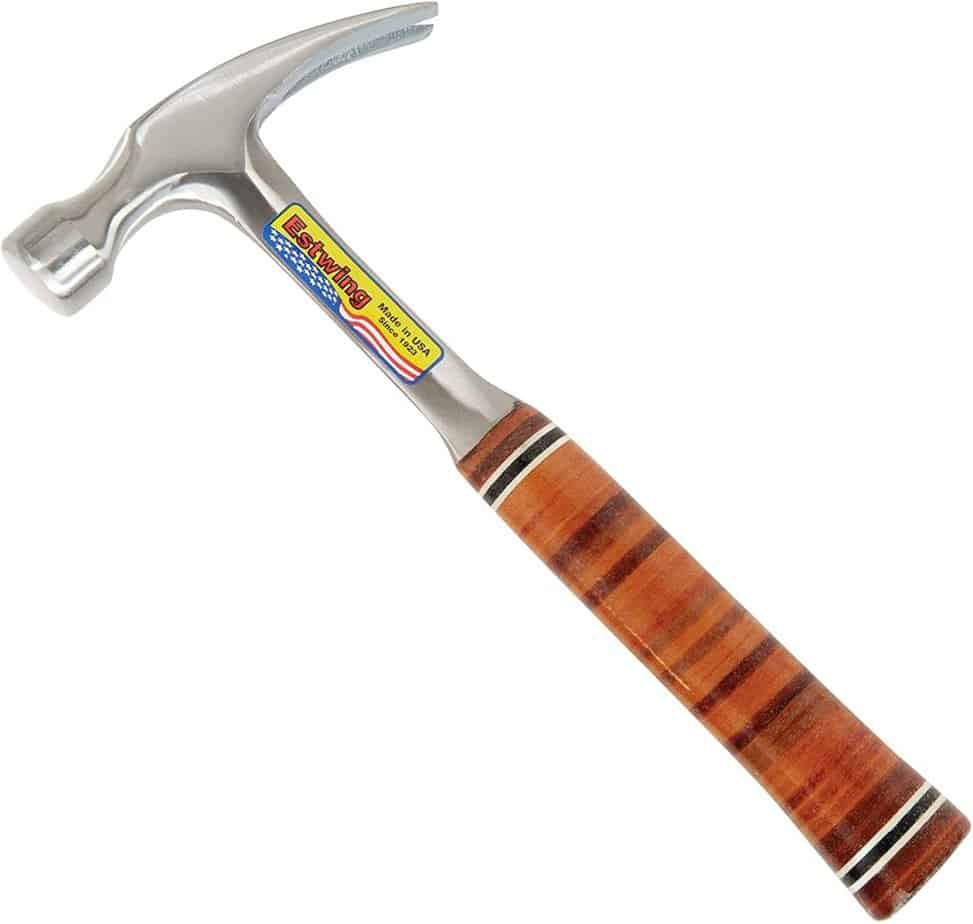
Estwing Hammer – 16 oz Straight Rip Claw with Smooth Face & Genuine Leather Grip
- FORGED IN ONE PIECE – The most durable, longest lasting striking tools available
- RIP CLAW VERSITILITY – Use for pulling nails, prying boards, demolition work, splitting wood and more
- BUILT FOR THE PRO –Framers, finishers, roofers, carpenters, contractors & serious DIYers
- GENUINE LEATHER GRIP – Hand sanded and lacquered for a durable yet comfortable finish
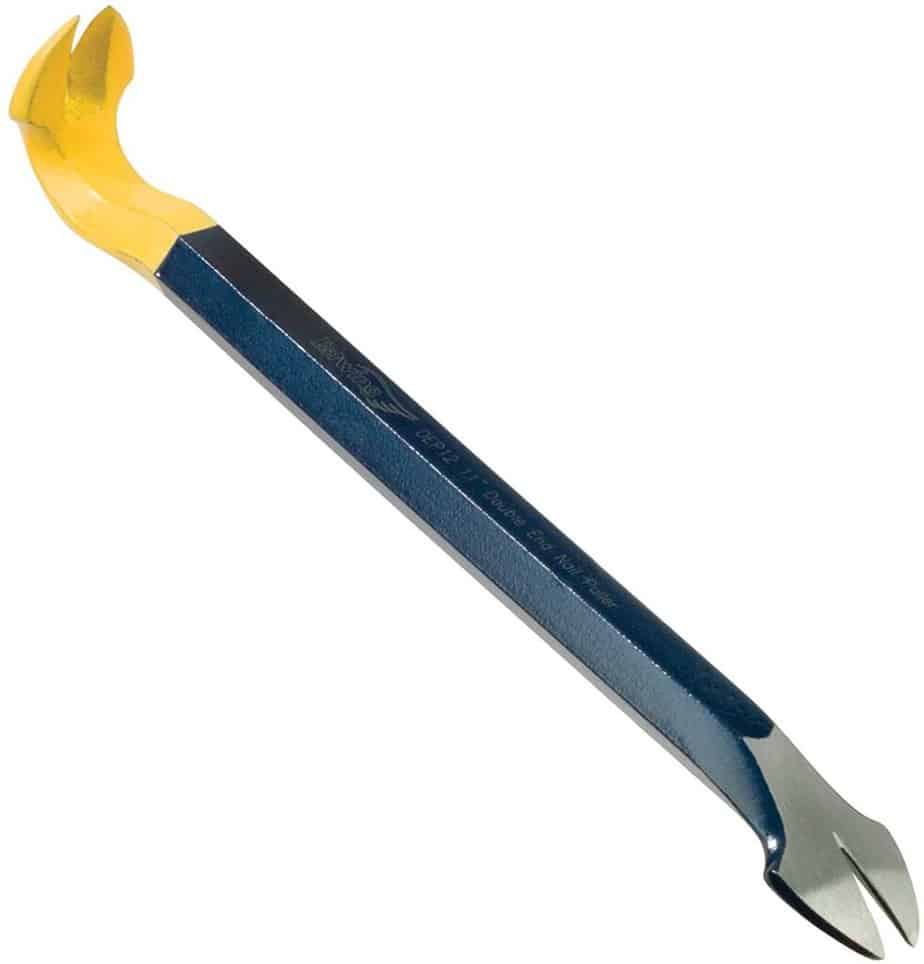
Estwing Nail Puller – 12″ Double-Ended Pry Bar with Straight & Wedge Claw End
- FORGED IN ONE PIECE – The most durable, longest lasting striking tools available
- HIGH LEVERAGE DESIGN – Rounded head for added torque & increased leverage
- BUILT FOR THE PRO – Carpenters, wood workers, demolition crews, framers, roofers, tradesmen & serious DIYers. Perfect for window & door trim, molding and baseboard
- WORK IN SMALL SPACES – The Precision thin claw allows the user to access hard-to-reach and confined places
- REMOVES HEADLESS NAILS – Claw designed allow for headless nail removal with minimal wood damage
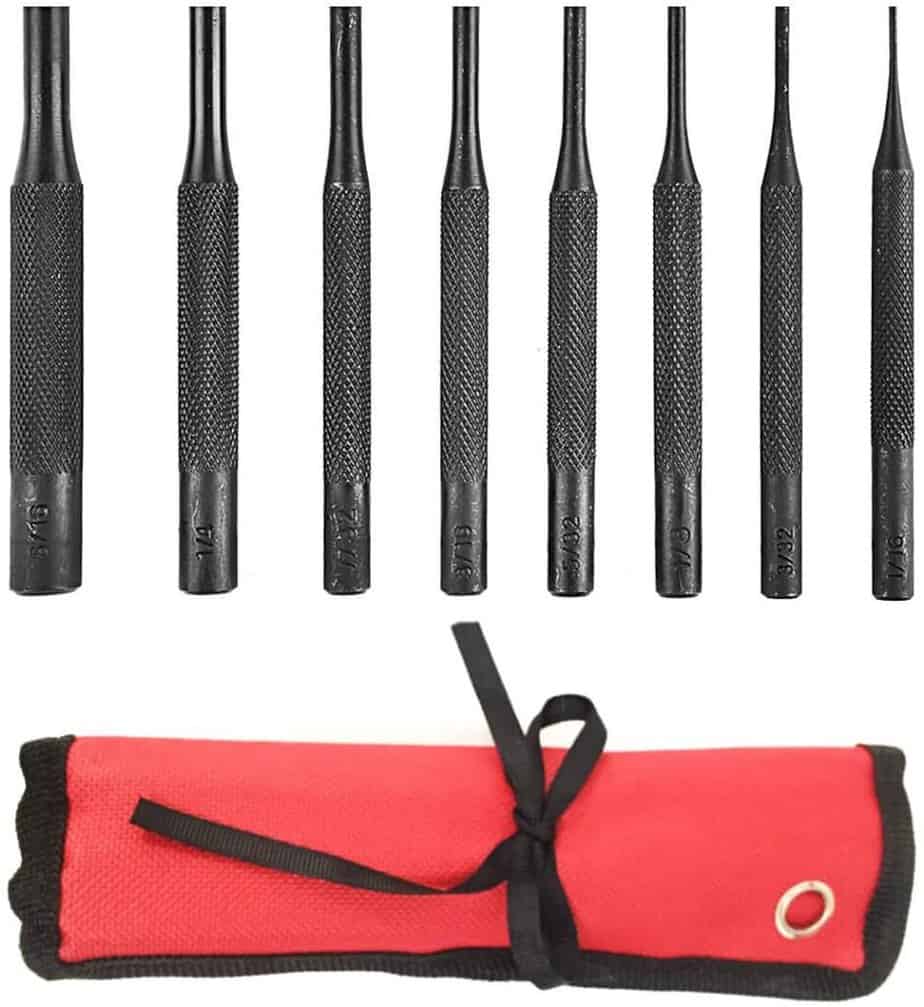
8 Pieces Pin Punch Set Tool – for Woodwork/Machinery/Repairs and Crafts
- ★High quality: 8 pieces pin punch set are made of highly quality hardened 40# steel, drop forged, heat treated & knurled steel for extreme durability, workability
- ★Full set pin punch: 8 pieces pin punch set including 1/16”, 3/32”, 1/8”, 5/32”,3/16”, 7/32”, 1/4”, 5/16” and 3.94inch long
- ★Great grip: The knurled handles are deeply cut and let you get a good grip on it while striking with a hammer
How Do You Nail Pieces Of Wood Together
When you are wanting to nail two pieces of wood together there are many considerations. The main thing to consider is how you are going to put them together. Will you be nailing them together flat, using a join, or for a support board for framing as an example.
Additionally, you need to consider what type of nail are you going to use.
Let’s look at some of the most common types of ways you can nail pieces of wood together and what you need to do to prepare.
- Pilot Hole – A pilot hole is very useful in nailing two pieces of wood together, however, I was surprised I didn’t see much of it when I was doing my research. If you are wanting to almost guarantee the wood not splitting a pilot hole is a great suggestion. Drilling a pilot hole just slightly smaller than the size of the wood nail you are using on the first piece of wood will ensure when you nail the wood together it will not split.
- Countersink – The use of countersinking a wood nail is to ensure either you are wanting a smooth finish which you can fill the top in with wood putty. Or, it is used when you are wanting to ensure the wood nail is holding at it maximum strength.
- Flat – When you take two pieces of wood and nail them flat against each other the main purpose is strength. This is mostly done for the construction of walls or a support frame for a deck for example.
- Join – There are many joins and are mostly used with screws versus wood nails. However, the most common is the butt join. This is where the end of the piece of wood is put against the other at a 90-degree angle for a corner. Nails are used a lot in this type, especially in framing walls or building a frame that will hold a lot of weight.
No matter how you nail the pieces of wood together you need to consider the nail, its strength, length, and ability to hold the two pieces of wood together.
If you want to know more about “How Far Should A Nail Go Into Wood” read our other article here!
Frequently Asked Questions About Wood Nails
How Do You Nail Wood Without Splitting It?
Ever tried to drive a nail into wood and the wood splits? This is actually common, but there are some things you can do to prevent this. There are many types of wood nails out there, but they all have their pros and cons. Most people use tacks or small nails so that they don’t split the wood as much. Some people also use glue when nailing in order to avoid splitting the board. However, the best method of nailing into the wood without splitting is to drill a pilot hole first.
Why Do My Nails Not Fall Out Of Wood?
Nails are made of metal and they don’t usually fall out of the wood. The nails will stay in place as long as there is pressure on them, but if you take away the pressure then the nail will not be able to hold up against gravity and it will start to slip out
What Holds Two Boards Together Better A Nail Or A Screw?
If you are considering using an alternative to wood screws or wood nails you may consider wood glue. There are many types of wood glue on the market and they work for many different types of applications and weather. Wood glue is a great alternative, however, consider the fact if you want to separate after the wood project is done or the wood glue is dry, it will be very complicated and messy. This is why wood nails and wood screws are the better solutions.
Nails Vs Screws For Hanging?
The question of nails vs screws for hanging can be a contentious one. Some people will say that the best way to hang something is with nails, but others may argue that you should use screws instead. The truth of the matter is that there are many factors involved in your decision and it’s important to know what they are before making up your mind. The main concern you want to consider is the weight of the item you are hanging and which will serve you better. Do you need to use the stud behind the wall or not, it will depend on the weight of what you are hanging.
Nails Vs Screws For Shelving?
Nails and screws are two common types of hardware that can be used to assemble shelving. Which one do you think is better? The answer depends on what your needs are for the project. Nails are cheaper, but they might require more time and effort than screwing things together. Screws look nicer, will hold up better over time, and don’t have as much risk of being seen when using a paint or finish coat.
Screws or Nails For Stud Wall?
A common question that is asked by homeowners and builders alike is which fastener should be used to secure the studs in a wall? The answer to this question can depend on the type of house, but for most residential construction nails are typically used. Screws are generally cheaper than nails so they may be a good choice if you are building an inexpensive home with a limited budget. Also, screws provide superior holding power as compared to nails because they penetrate deeper into the wood. Another consideration might be how easily accessible your stud walls will need to be during future repairs or renovations. If access isn’t necessary then it really doesn’t matter what type of fastener you use, just make sure it’s sturdy enough for your needs!


